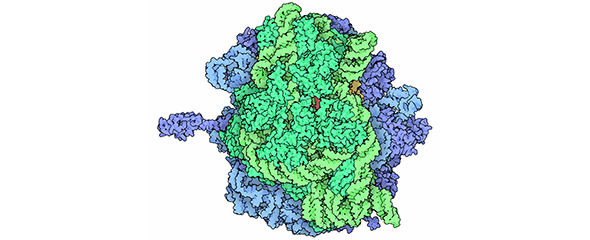PRF causes the ribosome to "slip" during translation and change the reading frame to produce a different protein. PRF is used, for example, by viruses that have to produce different proteins with a very limited number of mRNAs in order to multiply. “PRF is not a random event, but determined by RNA motifs and external factors. Certain RNA motifs that favor PRF were already known. However, in this study we describe the contribution of individual RNA base pairs within a PRF motif for the first time,” says Prof. Neva Caliskan, head of the research group “Recoding Mechanisms in Infections” at the HIRI. If PRF occurs, bases can be paired unconventionally, which can significantly change the free energy of the system. The researchers have thus developed a thermodynamic model to calculate the free energy of each base pair. These values can in turn be used to predict PRF efficiencies for any given mRNA molecule. Their study provides strong evidence that PRF is a thermodynamically controlled process in the cell. “Now, we have a tool to explore genomes for potential PRF sites. This will help us to design better RNA-based intervention strategies to fight pathogens,” says Caliskan.
Original publication:
Lars V. Bock*, Neva Caliskan*, Natalia Korniy, Frank Peske, Marina V. Rodnina, Helmut Grubmüller: Thermodynamic control of −1 programmed ribosomal frameshifting. Nature Communications 2019 DOI: 10.1038/s41467-019-12648-x (*co-first authorship)

© RCSB PDB/David S. Goodsell (CC-BY-4.0)
News
